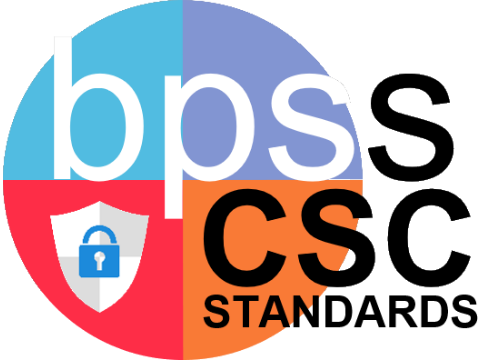CSC-10.CS Computer Science and CybersecurityComputing in SocietySub-Concepts
Calculation Method for ConceptsConcepts are larger groups of related Sub-Concepts with standards. So the Concept is a calculation of all the related standards that calculate to the sub-concept. So click on the standard identifier below each Concept to access the learning targets and proficiency scales for each standard. |
CSC-10.CT Computer Science and CybersecurityComputation ThinkingSub-Concepts
Calculation Method for ConceptsConcepts are larger groups of related Sub-Concepts with standards. So the Concept is a calculation of all the related standards that calculate to the sub-concept. So click on the standard identifier below each Concept to access the learning targets and proficiency scales for each standard. |
CSC-10.DC Computer Science and CybersecurityDigital CitizenshipSub-Concepts
Calculation Method for ConceptsConcepts are larger groups of related Sub-Concepts with standards. So the Concept is a calculation of all the related standards that calculate to the sub-concept. So click on the standard identifier below each Concept to access the learning targets and proficiency scales for each standard. |
CSC-10.IL Computer Science and CybersecurityInformation LiteracySub-Concepts
Calculation Method for ConceptsConcepts are larger groups of related Sub-Concepts with standards. So the Concept is a calculation of all the related standards that calculate to the sub-concept. So click on the standard identifier below each Concept to access the learning targets and proficiency scales for each standard. |
CSC-10.TS Computer Science and CybersecurityTechnology SystemsSub-Concepts
Calculation Method for ConceptsConcepts are larger groups of related Sub-Concepts with standards. So the Concept is a calculation of all the related standards that calculate to the sub-concept. So click on the standard identifier below each Concept to access the learning targets and proficiency scales for each standard. |
CSC-10.CS Computer Science and CybersecurityComputing in SocietySub-Concepts
Calculation Method for ConceptsConcepts are larger groups of related Sub-Concepts with standards. So the Concept is a calculation of all the related standards that calculate to the sub-concept. So click on the standard identifier below each Concept to access the learning targets and proficiency scales for each standard. |
CSC-10.CS_IC.1
10th Grade (CSC) Computer Science and Cybersecurity Standard
Computing in Society: Impacts of Computing Past, present, and possible future impact of technology on society. CSC-10.CS_IC.1 Evaluate the social, personal, and economic implications technology has on society and the economy.Student Learning Targets:Knowledge Targets
Reasoning Targets
Skills (Performance) Targets
Product Targets
Proficiency ScaleThe Student ...1 Beginning... with help, demonstrates a partial understanding of some of the simpler details and processes (Score 2.0 content) and some of the more complex ideas and processes (Score 3.0 content).
2 Developing... demonstrates no major errors or omissions regarding the simpler details and processes but exhibits major errors or omissions regarding the more complex ideas and processes (Score 3.0 content).
3 Proficient“The Standard.”... demonstrates no major errors or omissions regarding any of the information and processes that were end of instruction expectations.
4 Advanced... demonstrates in-depth inferences and applications regarding more complex material that go beyond end of instruction expectations.
ResourcesVocabulary
Websites
|
CSC-10.CS_SI.1
10th Grade (CSC) Computer Science and Cybersecurity Standard
Computing in Society: Social Interactions Technology facilitates collaboration with others. CSC-10.CS_SI.1 Evaluate the impacts of technology on social interactions.Student Learning Targets:Knowledge Targets
Reasoning Targets
Skills (Performance) Targets
Product Targets
Proficiency ScaleThe Student ...1 Beginning... with help, demonstrates a partial understanding of some of the simpler details and processes (Score 2.0 content) and some of the more complex ideas and processes (Score 3.0 content).
2 Developing... demonstrates no major errors or omissions regarding the simpler details and processes but exhibits major errors or omissions regarding the more complex ideas and processes (Score 3.0 content).
3 Proficient“The Standard.”... demonstrates no major errors or omissions regarding any of the information and processes that were end of instruction expectations.
4 Advanced... demonstrates in-depth inferences and applications regarding more complex material that go beyond end of instruction expectations.
ResourcesVocabulary
Websites
|
CSC-10.CT Computer Science and CybersecurityComputation ThinkingSub-Concepts
Calculation Method for ConceptsConcepts are larger groups of related Sub-Concepts with standards. So the Concept is a calculation of all the related standards that calculate to the sub-concept. So click on the standard identifier below each Concept to access the learning targets and proficiency scales for each standard. |
CSC-10.CT_DCA.1
10th Grade (CSC) Computer Science and Cybersecurity Standard
Computational Thinking: Data Creation & Analysis Data can be collected, used, and presented with computing devices or digital tools. CSC-10.CT_DCA.1 Represent complex data in more than one way to support a claim.Student Learning Targets:Knowledge Targets
Reasoning Targets
Skills (Performance) Targets
Product Targets
Proficiency ScaleThe Student ...1 Beginning... with help, demonstrates a partial understanding of some of the simpler details and processes (Score 2.0 content) and some of the more complex ideas and processes (Score 3.0 content).
2 Developing... demonstrates no major errors or omissions regarding the simpler details and processes but exhibits major errors or omissions regarding the more complex ideas and processes (Score 3.0 content).
3 Proficient“The Standard.”... demonstrates no major errors or omissions regarding any of the information and processes that were end of instruction expectations.
4 Advanced... demonstrates in-depth inferences and applications regarding more complex material that go beyond end of instruction expectations.
ResourcesVocabulary
Websites
|